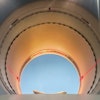The American College of Cardiology Foundation, working with several other specialty societies, has updated its guidelines on cardiac radionuclide imaging (RNI), including both SPECT myocardial perfusion imaging and cardiac PET.
The new guidelines, published in the June 9 Journal of the American College of Cardiology, are an update of the group's four-year-old Single-Photon Emission Computed Tomography Myocardial Perfusion Imaging (SPECT MPI) Appropriateness Criteria. The ACCF changed the name of the guidelines to also include cardiac PET.
The new guidelines reflect changes in test utilization and clinical data and clarify the use of cardiac radionuclide imaging (RNI), where needed. The group evaluated 67 common clinical scenarios and scored them for appropriateness on a scale of 1 to 9, with 9 being the highest.
"In general, use of cardiac RNI for diagnosis and risk assessment in intermediate- and high-risk patients with coronary artery disease (CAD) was viewed favorably, while testing in low-risk patients, routine repeat testing, and general screening in certain clinical scenarios were viewed less favorably," wrote writing group chair Dr. Robert Hendel from Midwest Heart Specialists in Winfield, IL, and colleagues. "Additionally, use for perioperative testing was found to be inappropriate except for highly selected groups of patients" (JACC, June 9, 2009, Vol. 53:23, pp. 2201-2209).
The new guidelines are expected to significantly affect clinical practice. Among the highlights:
- Cardiac radionuclide imaging is considered appropriate in patients with an intermediate or high likelihood of CAD, and in patients with a low likelihood if they were unable to exercise or had an uninterpretable electrocardiogram (ECG).
- Thrombolysis in myocardial infarction (TIMI) scores were incorporated into the indications describing acute chest pain syndromes to provide a more comprehensive risk assessment model consistent with literature, using a score of 2 as a threshold for high/low risk.
- For patients with suspected acute coronary syndrome, RNI was considered appropriate irrespective of the TIMI score or whether or not their troponin levels were elevated.
- In asymptomatic patients, RNI is appropriate only in patients at high risk of coronary heart disease; in those with intermediate coronary heart disease risk with an uninterpretable ECG, RNI is considered uncertain.
- The presence of unexplained troponin elevation, newly diagnosed heart failure, and ventricular tachycardia are appropriate indications for RNI, but RNI is of uncertain appropriateness in the setting of atrial fibrillation.
- RNI is inappropriate if prior test results were known, except when performed more than two years later and only if an abnormal study was previously present or if the patient is at intermediate or greater risk of coronary heart disease.
- Overall, RNI is considered inappropriate for preoperative risk assessment, except in the setting of intermediate risk or vascular surgery when at least one risk factor is present and the patient has a limited functional capacity.
- Within three months following an acute coronary syndrome, RNI is inappropriate except in patients without prior coronary angiography.
- After considerable discussion, the researchers decided to remove prerevascularization symptomatology as a discrimination point within the SPECT myocardial perfusion indication due to a lack of evidence that this qualification was relevant.
- The routine use of first-pass radionuclide angiography imaging is inappropriate, but appropriateness is considered uncertain when used selectively -- for example, in patients with suspected multivessel coronary disease.
Related Reading
SCCT publishes cardiac CTA guidelines, May 7, 2009
Framingham risk doesn't predict plaque burden, January 5, 2009
AHA urges cautious use of coronary CTA and MRA, July 9, 2008
ASE unveils new stress echo guidelines, September 7, 2007
New guidelines address cardiac nuclear imaging, August 19, 2003
Copyright © 2009 AuntMinnie.com




















